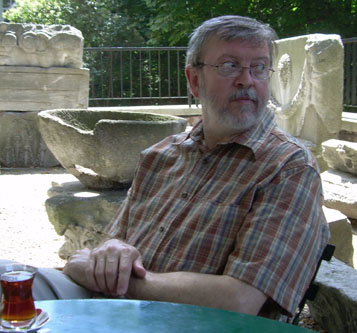Can you think of any classical music having to do with Thanksgiving? I can think of only one, and that's Earl George's decent Thanksgiving Overture of which I was unable to find a recording. In lieu of that piece I've decided instead to Give my Thanks to IMSLP for helping me discover new works at the touch of a button, including my most recent discovery, the mid-19th century Italian pianist-composer Stefano Golinelli. Music historians like to pretend that no worthy instrumental music was written in Italy between Boccherini (?) and the Casella-Respighi-Malipiero collective, but as guys like Giuseppe Martucci keep reminding us there's always more to life than what they taught you in Stuff 101. Golinelli helps fill a hole in my personal understanding of Italian instrumental music, that of the era of Brahms and late Schumann, and his piano works are typical of the best pianistic traditions of the 1840's and 1850's, or at least as far as I've heard, which is five of his 24 Preludes, op. 69, the second of his prelude sets. These preludes are part of the grand tradition of preludes in each major and minor key that that darned Bach guy started in the 18th century, and once again Golinelli's variations on the form prove that there's always room for one more really long cycle of preludes.
Unlike the Chopin Preludes, Golinelli kicks off the set relaxed and amiable. The post-Chopin years were quite fruitful in harmonic and rhythmic malleability, the former seen in the left hand's sliding chromatic triads and the latter in the right hand's offset beat. There's a fine discipline in this writing, as each hand never breaks their respective characters and the right never uses more than two notes at a time (and very prudently, at that). This combination of ambling textures and tentative lyricism makes for a curiously wistful mood, a mildly daring way to start off a long cycle of pieces, especially so considering that most of the 24 Preludes I've seen come flying out of the gate. The prelude also endears itself to me because I can't resist any piece that reminds me of the "Nocturne" from Grieg's Lyric Pieces, op. 54. The YouTube upload has both this prelude and five others from the set, all of them worthy of a spin and proving once again that pianists shouldn't leave any stones unturned.
Oh, heck, let's also Give Thanks to YouTube for being endlessly generous, including offering this delightful Golinelli Tarantella, a fine accomplishment considering that Tarantellas are rarely delightful:
Happy Thanksgiving from Forgotten Leaves!
~PNK
P.S. Don't you just love the word "ventiquattro"?
















.jpg)






















